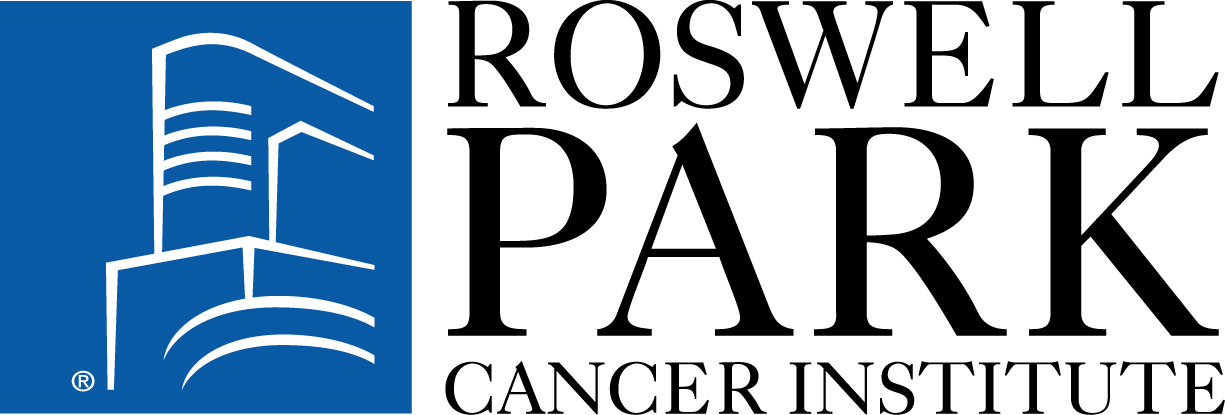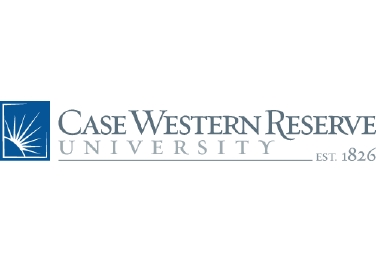Decitabine, Cytarabine, and Daunorubicin Hydrochloride in Treating Patients With Acute Myeloid Leukemia
| Status: | Active, not recruiting |
|---|---|
| Conditions: | Blood Cancer, Women's Studies, Hematology, Leukemia |
| Therapuetic Areas: | Hematology, Oncology, Reproductive |
| Healthy: | No |
| Age Range: | 18 - 65 |
| Updated: | 3/9/2019 |
| Start Date: | September 16, 2011 |
Randomized Phase II Study of Epigenetic Priming Using Decitabine With Induction Chemotherapy in Patients With Acute Myelogenous Leukemia (AML)
This randomized phase II trial studies how well decitabine works when given together with
daunorubicin hydrochloride and cytarabine in treating patients with acute myeloid leukemia.
Drugs used in chemotherapy, such as decitabine, daunorubicin hydrochloride, and cytarabine,
work in different ways to stop the growth of cancer cells, either by killing the cells or by
stopping them from dividing. Decitabine may help daunorubicin hydrochloride and cytarabine
kill more cancer cells by making them more sensitive to the drugs. It is not yet known
whether low-dose decitabine is more effective than high-dose decitabine when giving together
with daunorubicin hydrochloride and cytarabine in treating acute myeloid leukemia.
daunorubicin hydrochloride and cytarabine in treating patients with acute myeloid leukemia.
Drugs used in chemotherapy, such as decitabine, daunorubicin hydrochloride, and cytarabine,
work in different ways to stop the growth of cancer cells, either by killing the cells or by
stopping them from dividing. Decitabine may help daunorubicin hydrochloride and cytarabine
kill more cancer cells by making them more sensitive to the drugs. It is not yet known
whether low-dose decitabine is more effective than high-dose decitabine when giving together
with daunorubicin hydrochloride and cytarabine in treating acute myeloid leukemia.
OBJECTIVES: Primary I. To "Pick a Winner" by deciding whether further development of
epigenetic priming with decitabine prior to standard "7+3" induction chemotherapy should be
pursued.
Secondary I. To determine whether epigenetic priming with decitabine prior to standard
cytarabine and daunorubicin hydrochloride "7+3" induction chemotherapy has sufficient
efficacy to warrant further development as assessed by an overall CR1 rate ≥ 50%.
II. To establish the safety and expected toxicities of decitabine when used as priming for
cytarabine and daunorubicin hydrochloride "7+3" induction chemotherapy in acute myeloid
leukemia (AML).
III. To assess the pharmacodynamics of deoxyribonucleic acid (DNA) hypomethylation when
decitabine is administered as a short infusion.
IV. To investigate, in selected cases, the molecular and cellular consequences of
decitabine-induced hypomethylation by assessing the effects of decitabine-mediated
hypomethylation on transcriptional patterns in AML cells, and by determining the effect of
hypomethylation on the differentiation and/or apoptosis of leukemic blasts. (exploratory) V.
To identify biomolecular correlates of treatment response (biomarkers) to induction
chemotherapy in AML based upon the epigenetic pattern of DNA methylation in AML specimens
obtained prior to treatment. (exploratory)
OUTLINE: This is a multicenter study. Patients are stratified according to age (less than 50
years vs 50-65 years), white blood cell count (≤ 30 K/mL vs greater than 30 K/mL),
cytogenetic risk group (intermediate vs adverse risk), and antecedent hematological condition
preceding the diagnosis of acute myeloid leukemia (yes vs no). Patients are randomized to 1
of 2 treatment arms.
Arm I: Patients receive induction chemotherapy comprising daunorubicin hydrochloride
intravenously (IV) daily on days 1-3 and cytarabine IV continuously on days 1-7 in the
absence of disease progression or unacceptable toxicity. Patients who do not achieve a
complete remission (CR) after the first induction-chemotherapy course receive a second
identical induction course.
Arm II: Patients receive decitabine IV over 1 hour on days -5 to -1. Patients then receive
induction chemotherapy as in arm I in the absence of disease progression or unacceptable
toxicity. Patients who do not achieve a CR after the first induction-chemotherapy course
receive a second identical induction course.
Patients undergo blood, bone marrow, and oral mucosa cells sample collection at baseline,
prior to induction therapy, and after treatment for DNA methylation studies and
pharmacodynamic studies.
After completion of study treatment, patients are followed up for up to 10 years.
epigenetic priming with decitabine prior to standard "7+3" induction chemotherapy should be
pursued.
Secondary I. To determine whether epigenetic priming with decitabine prior to standard
cytarabine and daunorubicin hydrochloride "7+3" induction chemotherapy has sufficient
efficacy to warrant further development as assessed by an overall CR1 rate ≥ 50%.
II. To establish the safety and expected toxicities of decitabine when used as priming for
cytarabine and daunorubicin hydrochloride "7+3" induction chemotherapy in acute myeloid
leukemia (AML).
III. To assess the pharmacodynamics of deoxyribonucleic acid (DNA) hypomethylation when
decitabine is administered as a short infusion.
IV. To investigate, in selected cases, the molecular and cellular consequences of
decitabine-induced hypomethylation by assessing the effects of decitabine-mediated
hypomethylation on transcriptional patterns in AML cells, and by determining the effect of
hypomethylation on the differentiation and/or apoptosis of leukemic blasts. (exploratory) V.
To identify biomolecular correlates of treatment response (biomarkers) to induction
chemotherapy in AML based upon the epigenetic pattern of DNA methylation in AML specimens
obtained prior to treatment. (exploratory)
OUTLINE: This is a multicenter study. Patients are stratified according to age (less than 50
years vs 50-65 years), white blood cell count (≤ 30 K/mL vs greater than 30 K/mL),
cytogenetic risk group (intermediate vs adverse risk), and antecedent hematological condition
preceding the diagnosis of acute myeloid leukemia (yes vs no). Patients are randomized to 1
of 2 treatment arms.
Arm I: Patients receive induction chemotherapy comprising daunorubicin hydrochloride
intravenously (IV) daily on days 1-3 and cytarabine IV continuously on days 1-7 in the
absence of disease progression or unacceptable toxicity. Patients who do not achieve a
complete remission (CR) after the first induction-chemotherapy course receive a second
identical induction course.
Arm II: Patients receive decitabine IV over 1 hour on days -5 to -1. Patients then receive
induction chemotherapy as in arm I in the absence of disease progression or unacceptable
toxicity. Patients who do not achieve a CR after the first induction-chemotherapy course
receive a second identical induction course.
Patients undergo blood, bone marrow, and oral mucosa cells sample collection at baseline,
prior to induction therapy, and after treatment for DNA methylation studies and
pharmacodynamic studies.
After completion of study treatment, patients are followed up for up to 10 years.
Inclusion Criteria:
- Diagnosis of acute myeloid leukemia (AML) as defined by the World Health Organization
- Molecular AML-risk group is less-than-favorable as defined by any of the following
criteria:
- The absence of good-risk karyotype t(8;21), inv(16), t(16;16), or
t(15;17)identified by metaphase karyotype
- The absence of t(8;21), inv(16), t(16;16), or t(15;17) identified by fluorescent
in situ hybridization(FISH)
- The absence of the corresponding fusion transcripts, AML1-eight-twenty-one
corepressor (ETO), core-binding factor, beta subunit (CBFβ)-smooth muscle myosin
heavy chain (SMMHC), or progressive multifocal leukoencephalopathy (PML)-retinoic
acid receptor alpha (RARa), identified by reverse transcriptase-polymerase chain
reaction (RT-PCR)
- Patient does not have acute promyelocytic leukemia (APL, French-American-British
[FAB] M3)
- Eastern Cooperative Oncology Group (ECOG) performance status ≤ 2 (Karnofsky ≥ 60%)
- Adequate cardiac function as defined by either of the following:
- An echocardiogram demonstrating an ejection fraction within normal limits
- A multi gated acquisition (MUGA) scan demonstrating an ejection fraction within
normal limits
- Aspartate aminotransferase (AST)(serum glutamic oxaloacetic transaminase
[SGOT])/alanine aminotransferase (ALT)(serum glutamate pyruvate transaminase [SGPT]) ≤
2.5 times institutional upper limit of normal (ULN)
- Creatinine ≤ 2 mg/dL OR creatinine clearance ≥ 50 mL/min
- Total bilirubin ≤ 2 times ULN
- Patients with documented diagnosis of Gilbert syndrome resulting in elevated
total bilirubin levels will be eligible, provided all other eligibility criteria
are met
- Patients with a total bilirubin of 2-3 mg/dL and direct (conjugated) bilirubin in
the normal range will be eligible, provided all other eligibility criteria are
met
- Pregnant and nursing subjects may not be enrolled and pregnancy must be avoided; women
of child-bearing potential—defined as a sexually active woman who has not undergone
hysterectomy and who has had menses any time within the preceding 24 months—must have
a negative serum or urine pregnancy test within 7 days prior to registration; women
and men of childbearing potential must either commit to continued abstinence from
heterosexual intercourse or commit to two acceptable methods of birth control—one
highly effective method (e.g., IUD, oral or non-oral hormonal contraceptive, tubal
ligation or partner's vasectomy) and one additional effective method (e.g., latex
condom, diaphragm or cervical cap) at the same time from the time of screening through
final Treatment Response Assessment
- NOTE: should a woman become pregnant or suspect she is pregnant while she or her
partner is participating in this study, the subject should inform their treating
phy-sician immediately
- NOTE: the effects of decitabine on the developing human fetus are unknown but it
is a know teratogen in mammals (mice)
- Ability to understand and the willingness to sign a written informed consent document
Exclusion Criteria:
- Chemotherapy (other than hydroxyurea) or radiation within the 2 weeks prior to planned
therapy on this study or ongoing adverse events due to agents administered more than 2
weeks earlier
- Concurrent treatment with other investigational agents is not permitted
- Cumulative lifetime dose of anthracycline chemotherapeutic > 80 mg/m^2
- History of allergic reactions attributed to compounds of similar chemical or biologic
composition of decitabine, cytarabine or daunorubicin
- Uncontrolled intercurrent illness considered by the investigator to constitute an
unwarranted high risk for investigational drug treatment; examples include, but not
limited to the following:
- Uncontrolled serious infection; or
- Unstable angina pectoris; or
- Uncontrolled cardiac arrhythmia; or
- Active second malignancy requiring treatment; or
- Symptomatic congestive heart failure
- HIV-positive subjects with a CD4 count < 200 cells/μL are excluded due to the
increased risk of lethal infections when treated with marrow-suppressive
chemotherapy(87)
- NOTE: subjects with HIV infection and a CD4 count >= 200 cells/μL are eligible
but combination antiretroviral therapy should be held during administration of
chemotherapy due to the potential for pharmacokinetic interactions with
decita-bine, cytarabine or daunorubicin. Antiretroviral therapy may be resumed 24
hours after completion of the last dose of induction chemotherapy
- Subject has a psychiatric disorder, altered mental status or social situation that
would preclude understanding of the informed consent process and/or limit compliance
with study requirements
- Subject has an inability or unwillingness, in the opinion of the investigator, to
comply with the protocol requirements
- Subjects with central nervous system (CNS) (or leptomeningeal) infiltration by AML may
be considered for treatment at the Investigator's discretion and following discussion
with the Principle Investigator; all neurologic deficits must be noted prior to
enrollment on study
- Subject has circulating blast count > 50,000/μL (subjects may be enrolled if
circulating blast count is controlled by hydroxyurea and/or, if clinically indicated,
by leukophoresis)
We found this trial at
9
sites
New York, New York 10032
Click here to add this to my saved trials
Roswell Park Cancer Institute Welcome to Roswell Park Cancer Institute (RPCI), America's first cancer center...
Click here to add this to my saved trials
Click here to add this to my saved trials
Click here to add this to my saved trials
Click here to add this to my saved trials
Case Western Reserve Univ Continually ranked among America's best colleges, Case Western Reserve University has...
Click here to add this to my saved trials
Click here to add this to my saved trials
Click here to add this to my saved trials
Memorial Sloan Kettering Cancer Center Memorial Sloan Kettering Cancer Center — the world's oldest and...
Click here to add this to my saved trials


